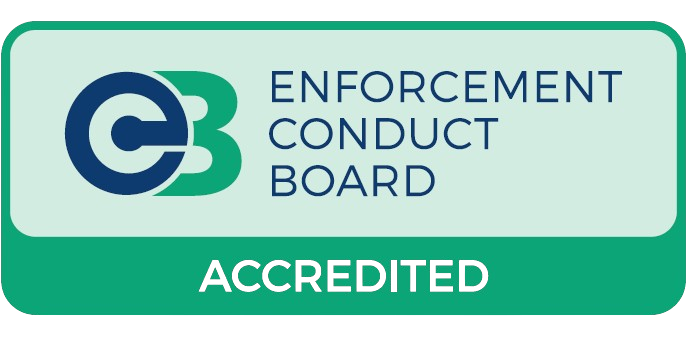Breach of Commercial Leases — Legal Guidance for Landlords
This guide explains what a commercial lease is, common breaches, what the lease must contain to enforce by forfeiture, and a full, practical walkthrough of Section 146 notices —including how we draft and serve them.
What Is a Commercial Lease?
A commercial lease grants a business tenant exclusive possession for a term in return for rent and compliance with covenants (rent, repair, use, alienation, insurance, statutory compliance). Most leases reserve an express right of re-entry/forfeiture allowing termination following specified breaches. Forfeiture is regulated by Law of Property Act 1925, s.146 [1] .
Common Breaches
Non-payment of rent
Arrears of principal rent and sums reserved as rent (often insurance/service charge).
Repair & condition
Disrepair/decoration breaches; special rules may apply under the Leasehold Property (Repairs) Act 1938 [2] .
User & illegal use
Operating outside permitted use or engaging in unlawful trading. See our Illegal Traders Forfeiture service.
Alienation & sharing
Unauthorised assignment, subletting, charging, sharing or parting with possession.
Insurance & compliance
Failure to insure/pay premiums or to comply with statute (fire, H&S, planning, licensing).
What Must the Lease Contain to Enforce by Forfeiture?
- Express re-entry/forfeiture clause: Without it, forfeiture is very limited. s.146 governs pre-conditions for most covenant breaches [1] .
- Service provisions: Addresses/methods for effective notice service reduce disputes (use them strictly).
- Rent demand wording: If the lease requires a formal rent demand before re-entry for arrears, ensure it’s satisfied (many modern leases disapply this).
- Peaceable re-entry: Typically available for rent arrears; other breaches require a valid s.146 notice first.
Strategy note: Exercising CRAR recognises the lease as continuing and can waive the right to forfeit for those arrears (e.g., Brar v Thirunavukkrasu )—plan your remedy before acting [3] .
See our Lease Forfeiture Overview for process options.
Section 146 Notice — Detailed Requirements & Process
When required: For breaches other than non-payment of rent , a landlord (or authorised agent/solicitor) must serve a written notice that (a) specifies the breach , (b) requires remedy (if remediable) within a reasonable time, and (c) requires compensation if appropriate [1] .
Drafting essentials we include
- Accurate identification of the covenant and precise particulars (dates, locations, clauses).
- Clear remedial steps tailored to the breach type (e.g., cease unlawful use; remove alterations; carry out Schedule of Works).
- Reasonable compliance window (fact-specific; too short risks invalidity).
- Compensation/costs demanded where appropriate.
- Warnings on next steps (peaceable re-entry or court) if non-compliance continues.
Repairs: extra protections under the 1938 Act
Where the original term was at least 7 years and at least 3 years remain, the Leasehold Property (Repairs) Act 1938 adds procedural steps (e.g., serving an LPRA notice, allowing tenant counter-notice, and potential court leave before forfeiture or damages for disrepair) [2] .
Service of the notice
We follow the lease’s service clause (method/address), and preserve proofs (certificate of posting, attendance notes, photographs). Proper service is critical to validity and to resisting relief applications [1] .
Relief from forfeiture
Tenants can apply for equitable relief. The courts have a wide but principled discretion (see Shiloh Spinners v Harding ) and will consider conduct, promptness, breach gravity, and ability to remedy/make good loss [4] .
When a s.146 notice is (and isn’t) needed
- Needed: Most covenant breaches (repairs, alienation, unlawful use, alterations).
- Not required for: Usually non-payment of rent (subject to lease wording), but consider waiver and safe peaceable re-entry [1] .
CRAR vs Forfeiture, Waiver & Election
Landlords must elect either to treat the lease as continuing or to forfeit. Actions recognising continuation (e.g., demanding/accepting rent after knowledge of breach, or exercising CRAR) can waive the right to forfeit for that breach [5] . In Brar v Thirunavukkrasu , the Court of Appeal confirmed CRAR waived forfeiture for the same arrears [3] .
- Once-and-for-all breaches (e.g., an unauthorised assignment on a specific date) can be permanently waived.
- Continuing breaches (e.g., ongoing unlawful use) accrue daily; waiver may not bar forfeiture for the ongoing breach [5] .
Need a strategy before acting? See Lease Forfeiture and Illegal Traders Forfeiture , or instruct us to review your case.
How We Draft & Serve Section 146 Notices
- Legal Review: Lease/title, breach evidence, waiver risks, LPRA 1938 applicability.
- Drafting: Particulars, remedy steps, timeframe, compensation, next-step warnings.
- Service: Strict compliance with lease methods/addresses; proofs maintained.
- Next Steps: If unremedied, assess peaceable re-entry risks or issue court proceedings ; anticipate potential relief applications [4] .
Quick FAQs
Do I need a s.146 notice for rent arrears?
Usually no (subject to lease wording). But consider relief risks and whether peaceable re-entry is appropriate and safe [1] .
What are the LPRA 1938 thresholds?
Original term ≥ 7 years and ≥ 3 years unexpired when enforcing repairing covenants; extra notice/counter-notice steps apply [2] .
Can I use CRAR and still forfeit for the same arrears?
Exercising CRAR generally waives the right to forfeit for those arrears—see Brar [3] .
What can amount to waiver?
Demanding/accepting rent after knowledge of breach; routine correspondence implying the lease continues; exercising CRAR [5] .
Need a compliant Section 146 notice drafted & served?
We handle drafting, service and next steps—including peaceable re-entry where appropriate.
Instruct UK BailiffsReferences
- Law of Property Act 1925, s.146 — legislation.gov.uk
- Leasehold Property (Repairs) Act 1938 (esp. s.1) — legislation.gov.uk
- CRAR can waive forfeiture (incl. Brar v Thirunavukkrasu ) — Walker Morris , Shoosmiths , Taylor Wessing
- Relief from forfeiture principles — Shiloh Spinners v Harding [1973] AC 691
- Waiver/election guidance — RFB Legal , Tanfield Chambers , Acceptance of Rent & Waiver
Relief from Forfeiture
Relief from forfeiture is the court’s equitable power to restore a lease after it has been (or is being) forfeited, usually on terms that the tenant puts matters right and pays the landlord’s costs and losses. The jurisdiction is discretionary and turns on fairness and the parties’ conduct [1] .
What it is
- Equitable remedy allowing the tenant to be reinstated if they remedy the breach and compensate the landlord.
- Available after a Section 146 process or even after peaceable re-entry/court order in appropriate cases [2] .
- Usually requires prompt application, clean hands, and payment of arrears/compensation and costs.
When can it be granted?
- Non-payment of rent: Relief commonly granted if arrears, interest and costs are paid promptly.
- Other breaches: Court considers seriousness, whether remediable, speed of remedy, and tenant conduct [1] .
- After re-entry: Relief may still be available where the tenant moves quickly and remedies the breach ( Billson ) [2] .
- Continuing vs once-and-for-all breaches: Ongoing unlawful use is often remediable; some historic breaches may not be.
Landlord actions to mitigate relief
- Get the notice right: Serve a valid s.146 LPA 1925 notice for non-rent breaches; set a reasonable time to remedy.
- Avoid waiver: Don’t demand/accept rent after knowledge of breach; consider whether using CRAR would waive forfeiture rights.
- Evidence & proportionality: Keep thorough evidence (photos, schedules, compliance history) to show seriousness and landlord reasonableness.
- Secure the premises lawfully: On peaceable re-entry, keep contemporaneous records and avoid any conduct that could look oppressive.
- Terms on relief: If relief seems likely, seek conditions: full arrears/interest, costs, undertakings to comply, deadlines, and inspection rights.
- Move promptly: Delay can favour the tenant; swift, consistent action strengthens opposition to relief.
Planning forfeiture or responding to a relief application? See our services: Lease Forfeiture (Overview) , Forfeiture for Illegal Traders , or instruct us to act.
- Relief principles: Shiloh Spinners Ltd v Harding [1973] AC 691.
- Relief after peaceable re-entry (non-rent breaches): Billson v Residential Apartments Ltd [1992] 1 AC 494.
- Notice prerequisite for non-rent breaches: Law of Property Act 1925, s.146.



